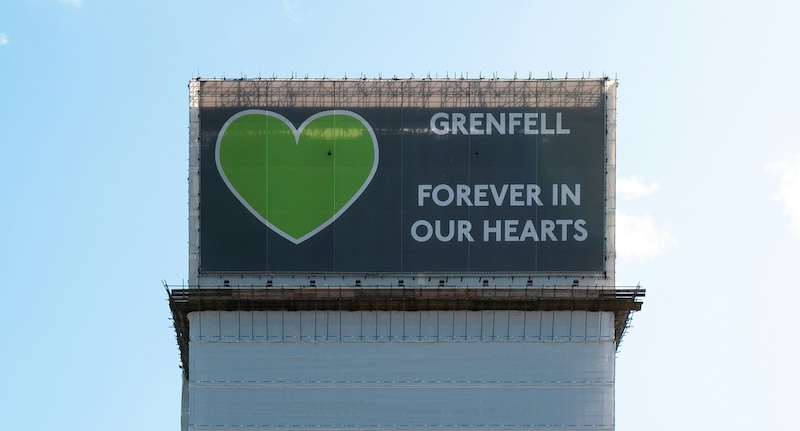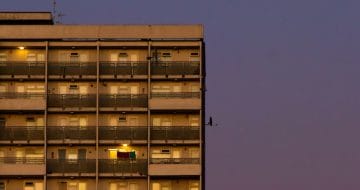LPC student Rachel Jones analyses the outcome of the Grenfell Inquiry and its effects on the housing and construction sectors

On 14 June 2017, a fire devastated a 24-storey residential tower block in London, resulting in the deaths of 72 people. Theresa May, who was prime minister at the time, announced that an inquiry would be overseen by retired judge Sir Martin Moore-Bick. The phase one report was published on 30 October 2019, with phase two released on 4 September 2024. The fire has had broad impacts on legislation, various sectors, and communities. It highlighted a deep-rooted distrust of public authorities, summarised in phase two’s conclusion that the fire “was the culmination of decades of failure by central government and other bodies in positions of responsibility”.
The fire and subsequent inquiry have already had significant implications for bodies specialised in sectors such as construction, social housing, and governance. However, have the changes thus far been enough? This article will analyse the recommendations set out by phase two to establish what further changes are needed to ensure tenant safety.
The impact on the housing sector
The Grenfell Tower fire has underscored the necessity of ensuring compliance with safety regulations. The housing sector has seen some significant changes since 2017 and will no doubt continue to do so for many years to come.
In 2023, the Social Housing (Regulation) Act 2023 was enacted, revising standards and imposing a duty on landlords concerning tenants’ health. The act has been a necessary and overdue update to the law, influenced not only by Grenfell but also by tragedies such as the death of Awaab Ishak, who died from prolonged exposure to mould. Phase two concluded that no further recommendations were necessary in this regard, implying that current legislation is sufficient to protect tenants. Part of this effectiveness can be attributed to the strengthening of the Regulator of Social Housing’s ability to issue unlimited fines to ensure compliance. Nevertheless, the sector must ensure adherence to the act, potentially by assessing any gaps in enforcing these new statutory requirements over the coming years.

The housing sector certainly has its work cut out: a number of policies need to be reviewed in response to the fire. The use of ‘stay put’ policies has been particularly contentious. LFS Fire explains that these policies recommend “residents not in the area affected remain in their flats with the windows and doors shut”. However, at Grenfell, this meant that many residents were not alerted to the fire in time. Moreover, the policy left those with disabilities and mobility issues without an adequate evacuation plan, a particularly concerning omission.
As a result, phase one recommended that Personal Emergency Evacuation Plans (PEEPs) be established for high-rise residential buildings. Although the housing sector will be evaluating and looking to legal professionals to help draft policy changes reflecting safety and liability concerns, it is clear that stronger guidance is needed. A letter from the Fire Brigades Union stresses that there has yet to be any “sensible” or “useful” guidance from the government regarding building evacuations. Further direction regarding the development and implementation of PEEPs, for instance, may be necessary to ensure the safety of all tenants.
Phase two also found that inspection and maintenance regimes “did not reflect best practice and were inconsistently followed”. For example, fire safety measures, such as self-closing doors in Grenfell Tower, either did not work effectively or were not in place. The Fire Safety Act 2021 was introduced to enforce stricter fire safety requirements, and it is essential that bodies in the housing sector reflect these standards and understand the potential liability issues that may arise. While the act is a strong start in addressing the failings uncovered after Grenfell, including more frequent building inspections, Phase two also recommended that new fire safety test methods be developed. Further considerations and consultations from fire safety professionals would likely address these concerns and help establish more effective procedures.
The impact on the construction sector
The construction sector has faced notable criticism in the inquiry, with phase two calling the regulatory system for the construction and refurbishment of high-rise residential buildings “seriously defective”.
A significant outcome of these reassessments was the Building Safety Act 2022. Section one of the act summarises its purpose as “to secure the safety of people in or about buildings and to improve the standard of buildings”. The act has broadened the duties of landlords and addressed the dangers posed by cladding, a clear necessity to bring greater protection to tenants in residential buildings.
However, it is evident from the report that implementing this act alone is not enough. Section 113 of phase two makes several recommendations for the construction sector to continue improving the safety of UK buildings. One such recommendation is the introduction of a singular regulator within the construction industry, which would report to a single Secretary of State. This would seemingly streamline the regulation of building safety and provide clarity for all parties. Additionally, the section recommends a statutory requirement “that a fire safety strategy, produced by a registered fire engineer, [be] submitted with building control applications…for the construction or refurbishment of any higher-risk building and for it to be reviewed and re-submitted at the stage of completion”. This would provide further safety assurances and could be an effective change to protect tenants.
Though these changes are undoubtedly necessary, a significant repercussion for the construction sector will be the increased costs resulting from regulatory compliance. The removal of cladding, for instance, can cost “millions of pounds per block”. This rise in costs will have knock-on effects on social housing expenses and may negatively impact housing affordability. It is crucial that the affected sectors plan accordingly in anticipation of these costs.
Want to write for the Legal Cheek Journal?
Find out moreThe impact on governance and compliance
Grenfell also highlighted the need for greater governance and compliance from companies and landlords regarding safety matters.
A greater focus on regulatory compliance is imperative to prevent similar failings in the future, as seen in the past. After the Knowsley Heights tower fire, it was found that the government failed “to heed the warning of the Environment and Transport Select Committee in December 1999… to minimise the risks posed by some external cladding systems”. All eyes will be on these authorities to ensure similar mistakes are not repeated. The government has promised change on multiple occasions, and the introduction of greater regulatory control is aimed at addressing complacency. But are promises of compliance enough? One blog post highlights the dangers of blind compliance without considering additional risks, stressing that safety regulations “should be viewed as a minimum standard, not a guarantee”.

The changes introduced thus far have their merits, particularly the improved accountability for building safety and the changing requirements for cladding. However, by viewing these rules as merely the minimum standard, we can ensure that the relevant bodies continue to reassess safety measures and seek new advice to keep buildings safe in the future. The aforementioned recommendation for a singular regulator would likely be a crucial step towards ensuring continued vigilance.
Conclusion
Law firms, sectors, and authorities across the UK will reflect on the findings of the Grenfell inquiry and work proactively to continually reassess policies to ensure that the failures outlined do not happen again. The housing and construction sectors have already seen significant changes and will continue to do so when policies are re-evaluated following phase two.
The laws and policies introduced thus far are a step in the right direction towards rectifying the failures that led to the fire. However, the inquiry has highlighted that further changes are still needed. The importance of safeguarding human lives and ensuring that devastating events like the Grenfell Tower fire are never repeated cannot be overstated.
Rachel Jones is an aspiring solicitor, currently studying the LPC LLM at Cardiff University. She graduated from the University of Manchester with an LLB Law degree.
The Legal Cheek Journal is sponsored by LPC Law.
 (
( (
(
